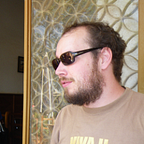How Big Is Boko Haram?
Terror group probably has between 7,000 and 10,000 fighters
by PETER DÖRRIE
During the early morning hours on Feb. 1, the Nigerian terror group Boko Haram launched its second attack on the city of Maiduguri.
The Islamist group has kept Maiduguri in its sights for a long time. It’s the capital of Nigeria’s northeast and home to a population exceeding two million people, and has a garrison of several thousand Nigerian troops and a major air force base.
Nigerian troops beat back the attackers and claimed to inflict hundreds of casualties. But Maiduguri wasn’t the only battle the insurgents fought in recent weeks. They took the town of Baga, plus 16 surrounding villages at the beginning of the year, after battling the local garrison for several hours.
And after the first foiled attack on Maiduguri last week, Boko Haram still managed to capture another town, Monguno, defended by an army contingent of equal size.
While official casualty counts from the Nigerian army are often exaggerated, the group’s repeated attacks raise the question—how many freaking militants does Boko Haram actually have?
Reliable estimates of Boko Haram’s strength do not exist. The group tolerates no independent reporting from the areas it controls, and military accounts are equally inaccurate and unreliable.
Local and international experts put the number at anywhere between 5,000 and 50,000 active fighters. This latter figure is almost certainly far too big.
But it’s possible to infer a rough estimate of Boko Haram’s size, which helps understand both the group’s actions—and its weaknesses. And one of the easiest ways to estimate the Islamists’ strength is to compare them with other, similar groups.
By now, Boko Haram has without a doubt transformed itself from a simple terrorist organization into a territorial insurgency comparable to Al Shabaab in Somalia, and the Islamic State in Syria and Iraq, although there are important differences between all three.
At the height of its power in September 2014, Islamic State had an estimated 31,500 fighters. U.S.-led airstrikes and Kurdish offensives have since killed thousands, although the group has surely recruited to offset these losses.
A rough estimate would put the strength of Islamic State at currently 25,000 troops, who defend a huge territory—including several major towns—against comparatively stronger conventional armies and international air power.
In Somalia, Al Shabaab has lost some of its strength, but the Islamist group still fields about 5,000 well-trained, experienced and equipped militants, according to the most recent estimates. This force is large enough to hold onto 55,000 square kilometers—a region the size of Croatia—against more than 21,000 African Union peacekeepers and several thousand local militiamen and government forces.
By comparison, Boko Haram currently controls an area the size of Belgium, about half the territory of Al Shabaab.
Boko Haram’s fighters are by all accounts neither as experienced nor as well-trained as Al Shabaab or Islamic State. But its opponents—up until the entry of Chad into the conflict—are weaker.
From these comparisons, we can deduce with moderate certainty that Boko Haram has a core strength of 7,000 to 10,000 fighters.
There’s several reasons for this. One is that 7,000 to 10,000 troops fits the tactical profile of the group. Boko Haram can muster the strength to defeat several dozen to several hundred enemy soldiers, but falters in the face of strong resistance by several thousand troops—like in Maiduguri.
Of course, Boko Haram’s core strength can’t easily compensate for the heavy losses taken during the last few months. This means Boko Haram probably has an additional reserve of several thousand novice recruits and slave soldiers.
Sure enough, there are reports of both ramped-up recruitment among youths in neighboring countries—and further abductions of men and boys who the terror group forces into service. The number of these auxiliaries is harder to discern, but it’s probably in the range of an extra 10,000 men.
Boko Haram likely uses these press-ganged soldiers as expendable cannon fodder. They’re placed in the most exposed positions during an attack, and consequently take the most losses.
The figure of a 7,000 to 10,000-strong core force also fits with what Boko Haram cannot do.
Considerably more than 10,000 well-equipped and experienced men—like Islamic State—would have by now taken Maiduguri. The city is comparable in size to Mosul and clearly an important goal for Boko Haram.
But considerably fewer than 7,000 men couldn’t likely control such a large swath of territory, and still mount offensive operations against fortified enemy positions in Baga and Monguno—or carry out frequent cross-border raids into Cameroon.
Taking these numbers into account, we can make some predictions about the further development of the conflict. Nigeria, Cameroon and Chad have deployed about 35,000 troops against Boko Haram—a considerable numerical advantage.
If the well-trained and equipped Chadians operate in Nigerian territory—and have sufficient air support—a concerted effort might be able to block further Boko Haram advances.
But the example of Somalia shows that numbers aren’t everything.
Insurgencies count on rough terrain and support from the local population to survive. Boko Haram has both. And Al Shabaab has held out for years despite similar disadvantages.
Then there’s everything we don’t know about Boko Haram.
The group’s financial and organizational capabilities are even more opaque than its military. Both Islamic State and Al Shabaab have substantial income from well-established economic activities, and both rely heavily on civil administrations to extract resources from the local population.
Little is known about the capabilities of Boko Haram in this regard.
